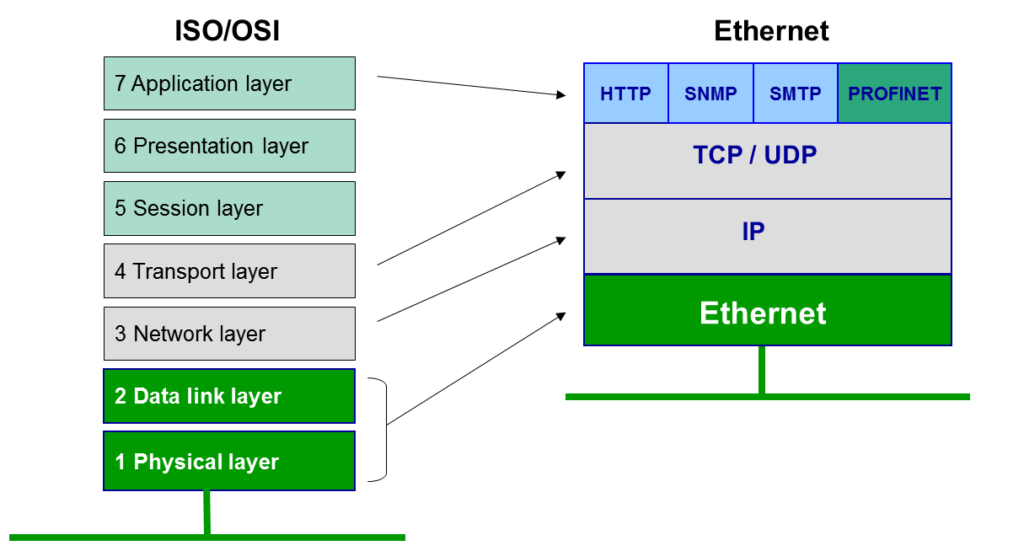What is PROFINET? PROFINET is an industrial communication network designed for robust, deterministic data transmission in the harsh conditions of factory and process environments. It is built on Industrial Ethernet which is built on Ethernet.
Ethernet is a network – an open standard defined by IEEE802.3. The standard defines what the signal looks like on the wire and what the medium that accesses the wire has to do. Networks are represented in general by the ISO/OSI reference model, often called the seven-layer stack. The Ethernet standard defines layers 1 and 2 of the 7-layer stack. By themselves layers 1 and 2 do not make a whole system. At a minimum you also need a layer 7 application. PROFINET uses layers 1, 2, and 7 for real time data. PROFIBUS did the same thing. The intervening layers (3, 4, 5, and 6) are not required in this scenario.
The Internet model collapses the seven layers to four. Layers 1 and 2 make up the lowest level, the Ethernet level. Layers 5 and 6 are not used. Layer 7 is still the application layer. Layer 3 is IP and layer 4 is TCP.
PROFINET uses all four of the Internet model layers. It uses TCP/IP for configuration and diagnostics and skips TCP/IP for real time data (using layers 1, 2, and 7 of the 7-layer model).
If that’s Ethernet, what is Industrial Ethernet? IEEE802.3 does not address the environment. Industrial Ethernet does. Industrial Ethernet accounts for the harsh environments of industry where there can be vibration, electromagnetic interference, oily vapor, and temperature extremes. So Industrial Ethernet is still just Ethernet electrically, but the components are rugged enough to withstand harsh conditions.
Industry imposes additional conditions beyond the environmental. While email can take as long as it wants to arrive, a signal to turn off a conveyor better arrive in milliseconds to prevent product spilling onto the floor. PROFINET achieves this speed by skipping the TCP/IP layers. This also fulfils an additional industry requirement, more deterministic performance. (By determinism, we mean that data arrives when it is supposed to, repeatably.)
–Carl Henning
More on how PROFINET works in this white paper:

